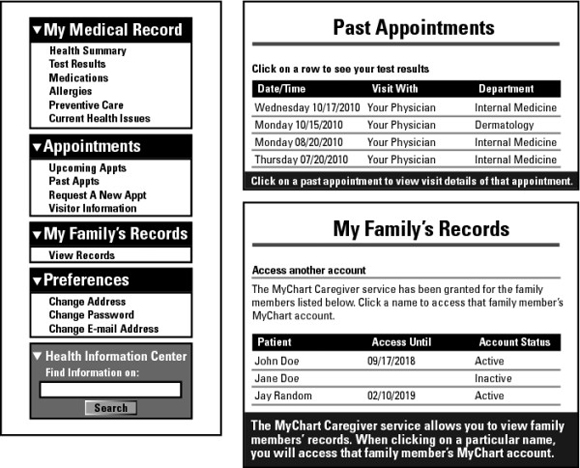Figure 15-1: A patient portal.
Patient portals
A patient portal is a secure online application that lets you communicate with patients any time, day or night. Many EHRs offer a Web-based patient portal application that links to your EHR server, so patients can be active participants in the management of their healthcare.
A common feature of a patient portal is secure messaging (see the “E-Mailing Your Patient” section earlier in this chapter). Additionally, most portals allow patients to perform such tasks as posting new health developments or asking questions of their providers. Most portals allow patients to fill out forms online prior to an office or hospital visit, request prescription refills, view and print their medical records, confirm billing statements and arrange for online payments, view lab results or diagnostic images, and schedule or change appointments.
Figure 15-1 shows a patient portal.

We mention in Chapter 2 that a patient portal goes a long way toward Meaningful Use (and the resulting incentive money). You can set up the portal to reflect aspects of Meaningful Use that you want to ensure your practice can prove. Most portals let practices decide what functions to use and what information to share, but it’s not as easy as turning on the feature and just letting patients start using the portal. As an organization, you’ll have to decide what makes sense for ...
Get Electronic Health Records For Dummies now with the O’Reilly learning platform.
O’Reilly members experience books, live events, courses curated by job role, and more from O’Reilly and nearly 200 top publishers.

